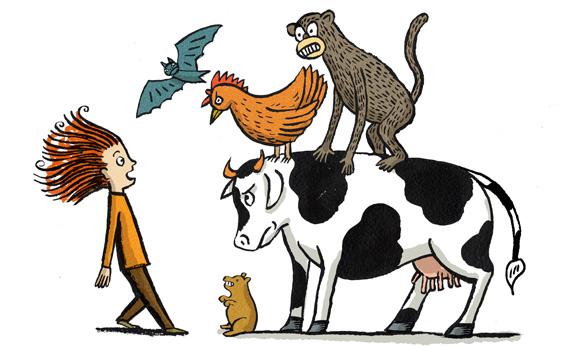Salma Hayek: 'I am proud to be Mexican' — Salma Hayek says she is proud to be Mexican and
that comments suggesting otherwise were "lost in translation."
The 45-year-old actress issued a statement Thursday after German Vogue magazine quoted her as saying she "hardly had any memories of what it is to be Mexican."

"I have never denied my background or my culture," Hayek says in the statement released by publicist Cari Ross. "I have taught my child to embrace her Mexican heritage, to love my first language, Spanish, to learn about Mexican history, music, folk art, food, and even the Mexican candy I grew up with. I have always been an active part of my community. I have tried my whole life to represent my Mexican roots with honor and pride. It saddens me when my words are lost in translation and taken out of context to hurt the people of Mexico, whom I love."
Hayek graces the cover of German Vogue and gives an interview about her role as the leader of a Mexican drug cartel in the Oliver Stone drama "Savages." Telephone calls seeking comment placed to the magazine late Thursday night went unanswered.
This is not the first time Hayek has made remarks about her Mexican background that have drawn attention. Last year, she quipped to a reporter in Spanish, "If it wasn't because of my high heels, I would still be in Coatzacoalcos with 10 children." ( Associated Press )
The 45-year-old actress issued a statement Thursday after German Vogue magazine quoted her as saying she "hardly had any memories of what it is to be Mexican."

FILE - In this Feb. 15, 2012 file photo, actress Salma Hayek arrives for the screening of the film, "As Luck Would Have It " (La Chispa De La Vida), at the 62 edition of International Film Festival Berlinale, in Berlin. Hayek says she is proud to be Mexican and that comments suggesting otherwise were “lost in translation.” The 45-year-old actress issued a statement Thursday, Aug. 23, 2012, after German Vogue magazine quoted her as saying she “hardly had any memories of what it is to be Mexican.” (AP Photo/Gero Breloer, File)
"I have never denied my background or my culture," Hayek says in the statement released by publicist Cari Ross. "I have taught my child to embrace her Mexican heritage, to love my first language, Spanish, to learn about Mexican history, music, folk art, food, and even the Mexican candy I grew up with. I have always been an active part of my community. I have tried my whole life to represent my Mexican roots with honor and pride. It saddens me when my words are lost in translation and taken out of context to hurt the people of Mexico, whom I love."
Hayek graces the cover of German Vogue and gives an interview about her role as the leader of a Mexican drug cartel in the Oliver Stone drama "Savages." Telephone calls seeking comment placed to the magazine late Thursday night went unanswered.
This is not the first time Hayek has made remarks about her Mexican background that have drawn attention. Last year, she quipped to a reporter in Spanish, "If it wasn't because of my high heels, I would still be in Coatzacoalcos with 10 children." ( Associated Press )
READ MORE - Salma Hayek: 'I am proud to be Mexican'




